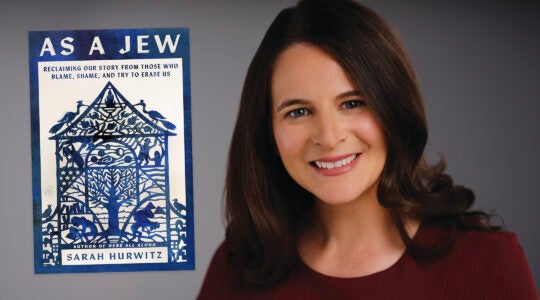Jack Wertheimer subtitles his recent report on Jewish philanthropy, “How Big Funders Have Transformed American Jewish Philanthropy.” (The report was covered here last month “Mega-Donors Increasingly Setting Communal Agenda.”)
Although he bemoans the increased agenda-setting power of big donors, he also focuses exclusively on them. This is a reasonable choice: big donors have disproportionate control over Jewish communal life, so a study of them will offer significant information about Jewish communal life. Yet despite his attention to big givers, Wertheimer neglects the structural features of American and Jewish life that have produced the big funder. Today’s big donor is a product of specific forms of inequality inscribed into philanthropy. Less are big donors transforming American Jewish philanthropy, and more has philanthropy — a state-based political and economic creature — transformed the status of donors, American Jews and American citizens.
Wertheimer notes that at the time of the Yom Kippur War in 1973, Jewish federations, umbrella philanthropic organizations, reached out to average Jews across the country to raise dollars from them. Today these same federations (which themselves are dwindling in number) receive gifts from fewer than half the number of Jews who donated in the 1970s. For Wertheimer, this is important because it represents a falling away of “sectarian” Jewish giving; that is, Jews giving to Jewish causes. Setting aside whether his definition of sectarian giving is overly narrow, we should ask what factors might have caused this reconfiguration of the pool of Jewish givers.
If we dig into the historical record, we will find that one of the most important shifts from the early 1970s to the present in Jewish philanthropy is not, exactly, the rise of the big donor. Instead, it is the rise of endowment and capital-accumulating accounts that over-value big donors’ dollars and under-value those of smaller donors.
In my research, I have found that only starting in the 1950s did Jewish federations consider the possibility of building perpetual endowments. Until that point, most federations considered their purpose to serve as pass-through organizations, taking donations in and allocating them each year. In the post-World War II years, as American Jews became more prosperous and some, even, grew affluent from business and real estate profits, the central financial technology of Jewish fundraising started to shift. Furthermore, with Great Society programs providing grants for social welfare and human services, Jewish agencies could continue their work without being nearly as reliant as they once were on private donations.
Thus, new access to wealth — both private capital and public dollars — freed up Jewish philanthropic entities to move into new realms. Wertheimer aptly makes this point in his discussion of the rise of “identity” philanthropy, connected to Jewish education and, also, anti-assimilation programs. But the new frontier of Jewish philanthropy was also about a new financial proposition: that more dollars should be generated than were needed.
Proponents of endowment building had an uphill battle to fight to convince Jewish federation leaders to embrace practices of perpetual capital growth that did not rely solely on annual fundraising. Federation leaders worried that endowment policies would disempower the community at large.
Whether endowments, support foundations, donor-advised funds, or private foundations, the financial technologies that grew in the late 1960s and early 1970s represented capital practices that favored aggregation over distribution. Put another way, these vehicles were products of and helped sustain inequality. They took dollars that individuals and communities did not need to fulfill present needs, subsidized those dollars with federal tax expenditures (through deductions and exemptions), and then added more value to those dollars through returns on investments, generally not subject to capital gains taxes.
We know that in these same years, the inequality gap, whether measured through wages or, even more strikingly, through total valuation of assets, in the United States grew. The new technologies of Jewish philanthropy and American philanthropy emerged from the widening chasm between the wealthiest Americans and the rest.
When Wertheimer offers among his report’s recommendations that the Jewish philanthropic sector think about how to engage more Jews in Jewish giving, he presents a possibility for Jewish leaders to do more than strategize new fundraising campaigns. If we are to take his suggestion seriously — and if we are to take the history of philanthropic practice seriously — we will understand that getting more Jews to give Jewishly will involve rethinking fundamental economic structures in our country.
When the end goal of Jewish philanthropy is simply to build new institutions or to fund innovation, then it does not much matter how the money gets from the giver to the goal. But if Jewish giving itself is a way for Jews to feel invested in a meaningful approach to living and being part of improving the world, then how the money moves matters, arguably more than whether it moves toward sectarian or non-sectarian causes.
Lila Corwin Berman is professor of history at Temple University, where she holds the Murray Friedman Chair and directs the Feinstein Center for American Jewish History.
The New York Jewish Week brings you the stories behind the headlines, keeping you connected to Jewish life in New York. Help sustain the reporting you trust by donating today.





